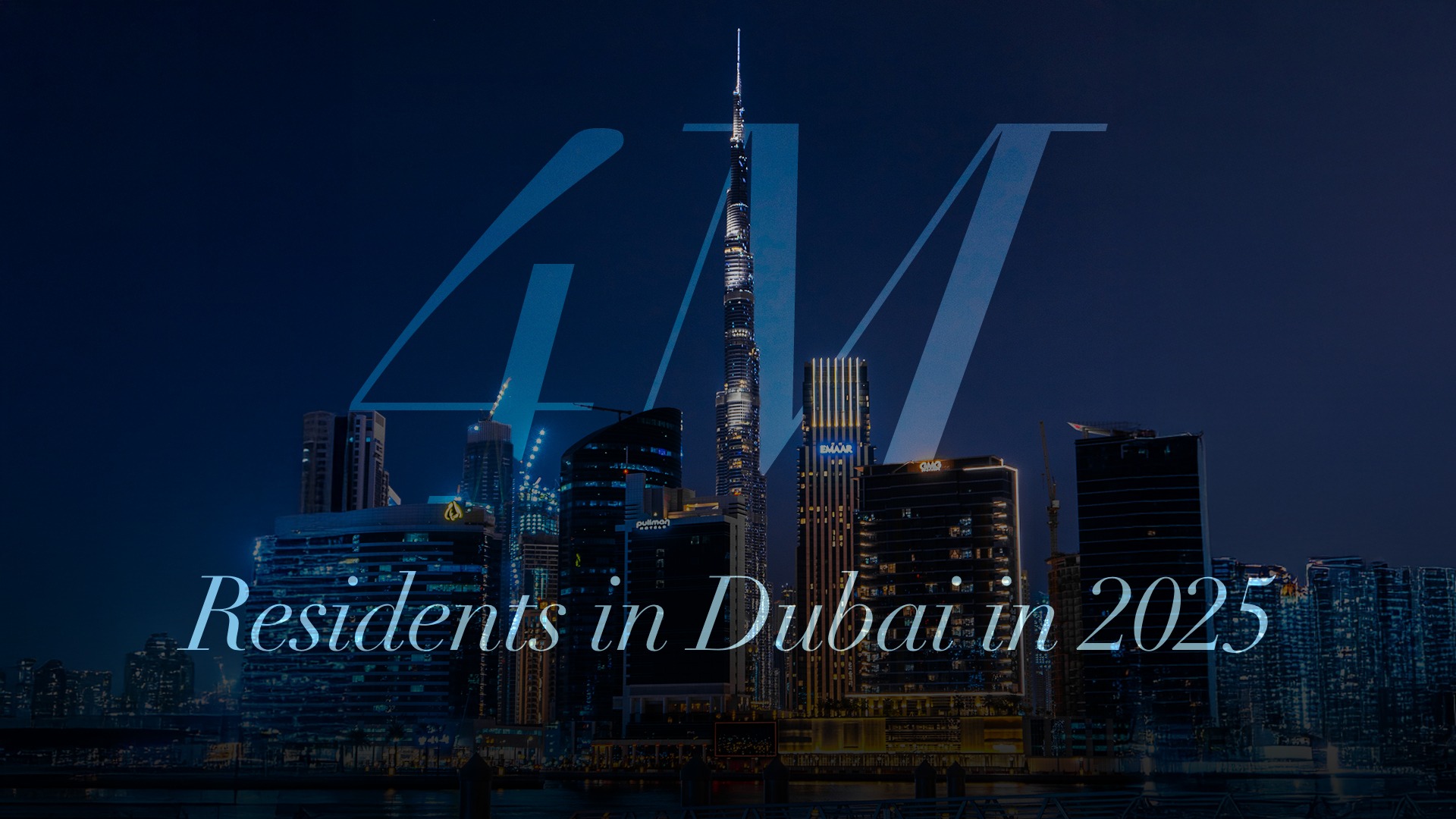Dubai has crossed a milestone that once seemed distant. In 2025, the city’s population surged past 4 million residents, a leap that signals more than demographic growth; it marks a new chapter in the story of Dubai’s real estate.
The headline numbers are striking. Over the past year alone, Dubai welcomed 231,000 new residents, translating into a growth rate of 6.13%. Put another way, the city is now adding the equivalent of a mid-sized European capital every few years.
Rewind to 2008, when Dubai was home to just 1.6 million people. Fast-forward less than two decades, and that figure has more than doubled. Few global cities can point to such momentum, and fewer still can translate it into economic vitality the way Dubai has.
Demand That Reshapes the Market
This population boom is not an abstract number; it is a lived reality. Every family arriving, every entrepreneur setting up shop, every professional signing a lease places new pressure on the housing supply.
At the top end, demand is relentless. Ultra-wealthy buyers are snapping up homes in Palm Jebel Ali, Dubai Hills, and Emaar Beachfront, districts where supply feels almost permanently behind demand. Rental yields here stretch beyond the city average, climbing into the 8–9% range against a healthy baseline of 6–7%. For investors chasing returns, Dubai’s luxury property market remains one of the world’s most compelling plays.
But the spotlight cannot stay only on luxury. Beneath the glitter, middle-income households are facing the sharp edge of growth. Rents have outpaced wages, creating a crunch that makes mid-market housing one of Dubai’s most pressing challenges. This is where the story of population growth collides with questions of affordability and livability.
A Market That’s Running Hot
The numbers behind the market show just how stretched and how dynamic the system has become. Today, Dubai counts more than 2,000 developers, nearly 30,000 registered agents, and close to 9,000 brokerages. It is one of the most competitive and data-driven real estate ecosystems on the planet.
AI-driven projections suggest the surge is far from over. By 2030, the city could be home to 5.15 million people, meaning another 1 million residents in just five years. To keep pace, Dubai will need between 300,000 and 350,000 new housing units. That’s an immense build-out, even by Dubai’s ambitious standards.
Promise Meets Pressure
This is where opportunity and risk travel side by side. For investors, population growth of this scale is a powerful signal: demand will remain strong, particularly in rising corridors such as Dubai South and Dubai Creek Harbour. For developers, the call is clear: new projects must not only cater to luxury but also to the underserved middle tier.
Yet the risks are also real. If developers misjudge the market and oversupply collides with a slowdown in migration, pressure could mount. And growth on this scale raises deeper questions: Can infrastructure, from transport networks to energy grids, stretch fast enough? Can sustainability keep pace with expansion?
Dubai’s leadership appears attuned to these pressures. Regulatory tightening, smarter planning, and sustainability-focused investment are expected to define the next chapter. The future may not only be about building more, but building better, efficient, green, and resilient.
The Decade That Will Define Dubai
Crossing 4 million residents is more than a statistic. It is a turning point that crystallizes both the promise and the pressure of Dubai’s growth. The city has proved its magnetic pull; the task ahead is to house, sustain, and elevate that momentum without losing balance.
For investors, this is not just another cycle; it is an era. An era where growth is assured, but where strategy, timing, and selectivity will separate winners from the rest.
Dubai has always thrived on ambition. Now, as it prepares to welcome another million residents by the end of this decade, the city stands poised to show the world how to turn explosive growth into lasting resilience.

